Cover photo by Alan Manson.
Find the Pallid Spreadwing in the FBIS database (Freshwater Biodiversity Information System) here.
Family Lestidae
Identification

Mpempe Pan, KwaZulu-Natal
Photo by Ryan Tippett
Small size
Length up to 44mm; Wingspan attains 48mm.
The Pallid Spreadwing exhibits highly variable colouration. The khaki brown form of Lestes pallidus is very similar to Lestes ictericus (Tawny Spreadwing), but that species has noticeably rounded wing tips, plain brown pterostigmas and differently shaped claspers.
Click here for more details on identification.
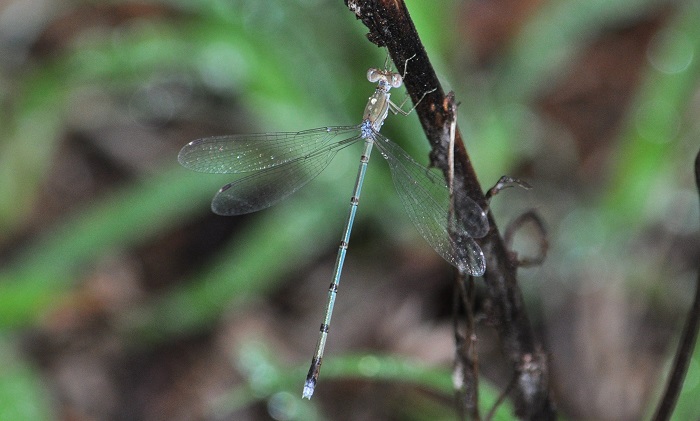
Hluhluwe district, KwaZulu-Natal
Photo by Ryan Tippett
Habitat
The Pallid Spreadwing favours ephemeral habitats, particularly rain-filled water bodies. It inhabits pools, pans, and marshy areas with an abundance of grass. The Pallid Spreadwing is mostly found in seasonally dry savanna regions.

Photo by Ryan Tippett
Behaviour
The Pallid Spreadwing is able to rapidly colonise seasonal waterbodies after rain, even sites that have been dry for several years. It spends long periods perched on grass stems with its wings outstretched. The Pallid Spreadwing is often gregarious and both sexes are found in the same vicinity.
The Pallid Spreadwing is most active from September to May, but flies all year at some sites (See Phenology below).
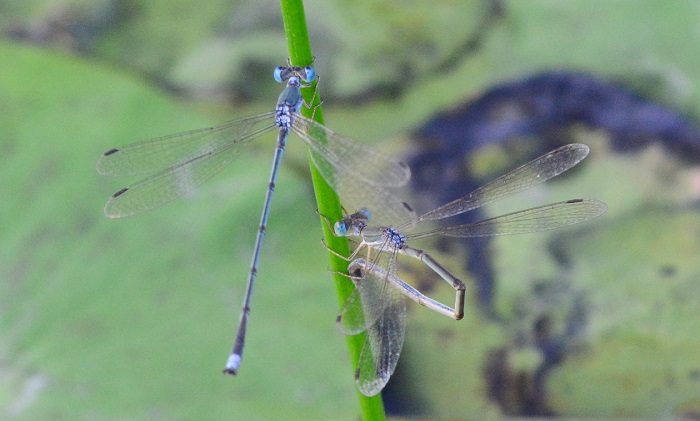
Ehlatini Bush Camp, KwaZulu-Natal
Photo by Ryan Tippett
Status and Conservation
The Pallid Spreadwing is localised, but common to abundant where it occurs. It is listed as of Least Concern in the IUCN Red List of Threatened Species.

Carnarvon district, Northern Cape
Photo by Ryan Tippett
Distribution
The Pallid Spreadwing is native to Sub-Saharan Africa, where it is widespread but patchily distributed.
In South Africa, the Pallid Spreadwing is widespread in the north, becoming less common in the south where it is far more localised.
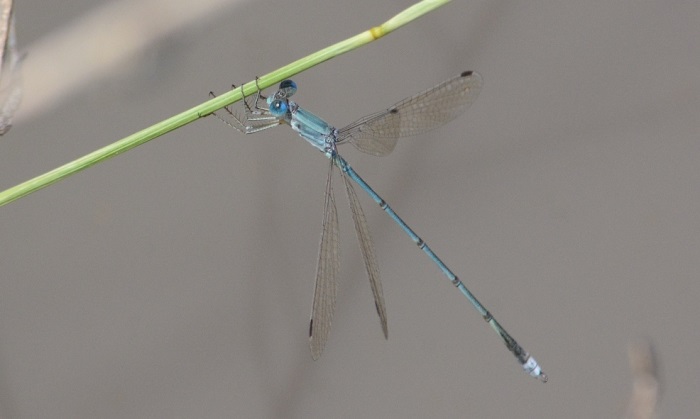
Linyanti, Botswana
Photo by Ryan Tippett
Below is a map showing the distribution of records for Pallid Spreadwing in the OdonataMAP database as at February 2020.

Below is a map showing the distribution of records for Pallid Spreadwing in the OdonataMAP database as of December 2024.
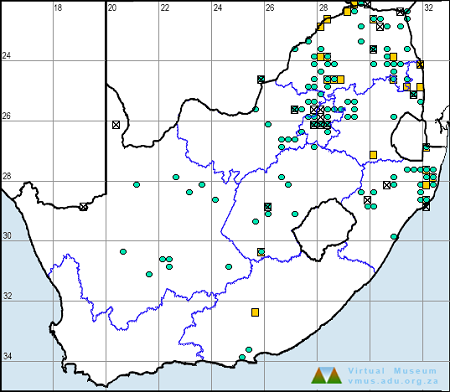
The next map below is an imputed map, produced by an interpolation algorithm, which attempts to generate a full distribution map from the partial information in the map above. This map will be improved by the submission of records to the OdonataMAP section of the Virtual Museum.


Ultimately, we will produce a series of maps for all the odonata species in the region. The current algorithm is a new algorithm. The objective is mainly to produce “smoothed” maps that could go into a field guide for odonata. This basic version of the algorithm (as mapped above) does not make use of “explanatory variables” (e.g. altitude, terrain roughness, presence of freshwater — we will be producing maps that take these variables into account soon). Currently, it only makes use of the OdonataMAP records for the species being mapped, as well as all the other records of all other species. The basic maps are “optimistic” and will generally show ranges to be larger than what they probably are.
These maps use the data in the OdonataMAP section of the Virtual Museum, and also the database assembled by the previous JRS funded project, which was led by Professor Michael Samways and Dr KD Dijkstra.
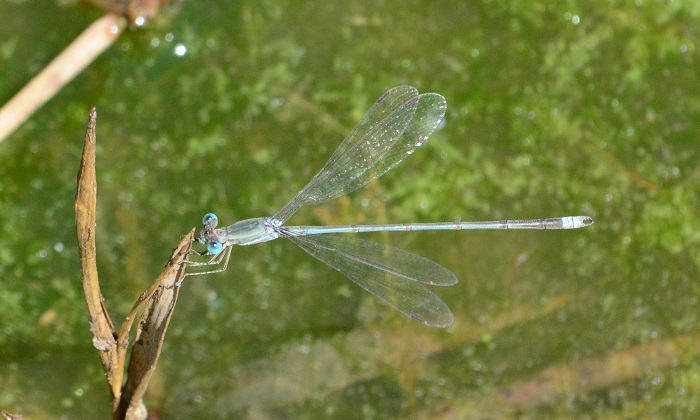
Hluhluwe district, KwaZulu-Natal
Photo by Ryan Tippett
Phenology


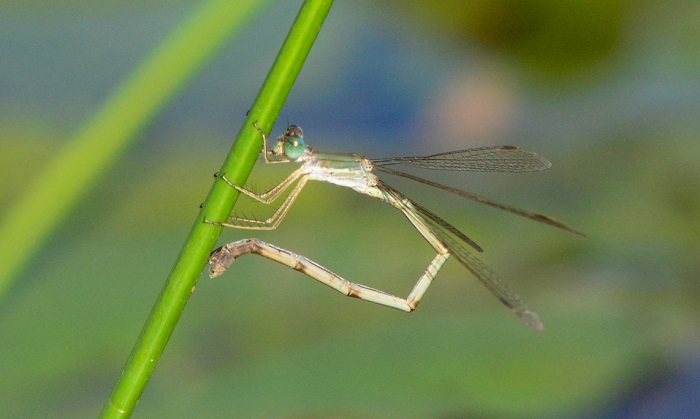
Hluhluwe district, KwaZulu-Natal
Photo by Ryan Tippett
Further Resources
The use of photographs by Alan Manson is acknowledged. All other photographs by Ryan Tippett.
Pallid Spreadwing Lestes pallidus Rambur, 1842
Other common names: Pale Spreadwing (Alt. English); Bleekspanvlerkie (Afrikaans)
Recommended citation format: Loftie-Eaton M; Navarro R; Tippett RM; Underhill L. 2025. Pallid Spreadwing Lestes pallidus. Biodiversity and Development Institute. Available online at https://thebdi.org/2020/04/20/pallid-spreadwing-lestes-pallidus/
References: Tarboton, M; Tarboton, W. (2019). A Guide to the Dragonflies & Damselflies of South Africa. Struik Nature.
Samways, MJ. (2008). Dragonflies and Damselflies of South Africa. Pensoft
Samways, MJ. (2016). Manual of Freshwater Assessment for South Africa: Dragonfly Biotic Index. Suricata 2. South African National Biodiversity Institute, Pretoria
Martens, A; Suhling, F. (2007). Dragonflies and Damselflies of Namibia. Gamsberg Macmillan.
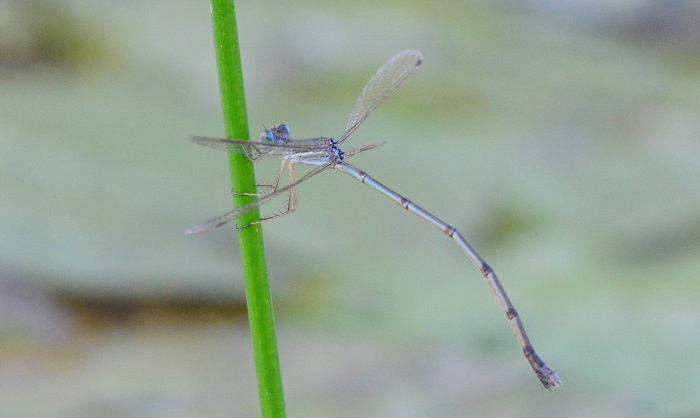
Ehlatini Bush Camp, KwaZulu-Natal
Photo by Ryan Tippett

